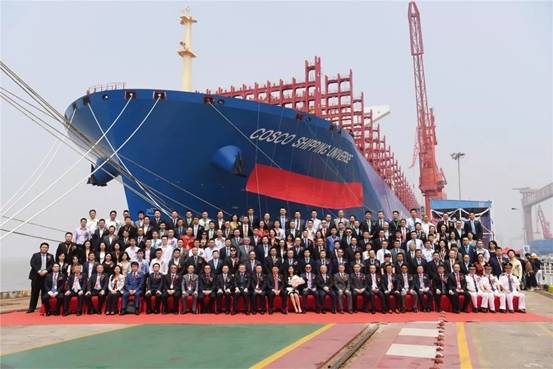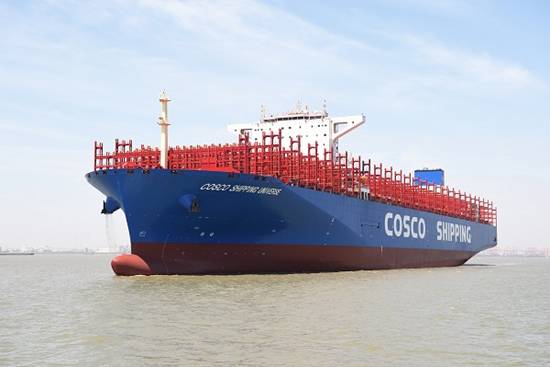|
|
|||||
The vessel Universe, made by China COSCO Shipping Corporation Limited and the largest container ship ever made in China, docked at Tianjin Port on Aug 27. One of the largest container ships in the world, Universe has a maximum capacity of 21,237 standard containers. In addition to Tianjin, its docking sites include Rotterdam in the Netherlands, Hamburg in Germany and ports of other countries and regions along the 21st- century Maritime Silk Road. "The ship is getting bigger," said Xu Dexiang, the captain of Universe. "Five years ago, it had a capacity of only 5,400 standard containers. That then increased to 10,000, then 13,000, and now to 21,000. What's more, the freight volume is also increasing, in that almost each voyage reaches full load.”
"Universe", made by China COSCO Shipping Corporation Limited, the largest container ship that China has made, is delivered on June 12, 2018. [Photo provided to chinadaily.com.cn]

 |
|
The "Universe" is 400 meters long, 58.6 meters wide and 33.5 meters high. It has a maximum draft of 16 meters, a designed speed of 22 nautical miles per hour, a maximum load of 80,000 tons and a maximum capacity of 21,237 standard containers. [Photo provided to chinadaily.com.cn] |
Capacity is an important criterion of modern container ships, and of container terminals. According to Chen Donghui, assistant to the general manager of Tianjin Port Pacific International Container Terminal, which is a central point of the Belt and Road Initiative and coordinated development of the Beijing-Tianjin-Hebei region, Tianjin Port is actively improving the construction of its container logistics network.
At present, Tianjin Port has more than 40 container vessel routes connecting countries and ports along the Maritime Silk Road, operated by nearly 20 shipping companies such as COSCO, Maersk, MSC and CMA CGM, and connecting with more than 40 ports in Singapore, India, Pakistan and other countries and regions.
Tianjin Port has eight weekly international routes to Europe, the Mediterranean coast, the United States, West Africa and Southeast Asia, seven of which are operated by ships carrying more than 10,000 standard containers; its five European routes are all operated by ships carrying 16,000 to 21,000 standard containers.
According to Chen, it had a throughput of 2.05 million standard containers from January to July this year, achieving a steady year-on-year growth.